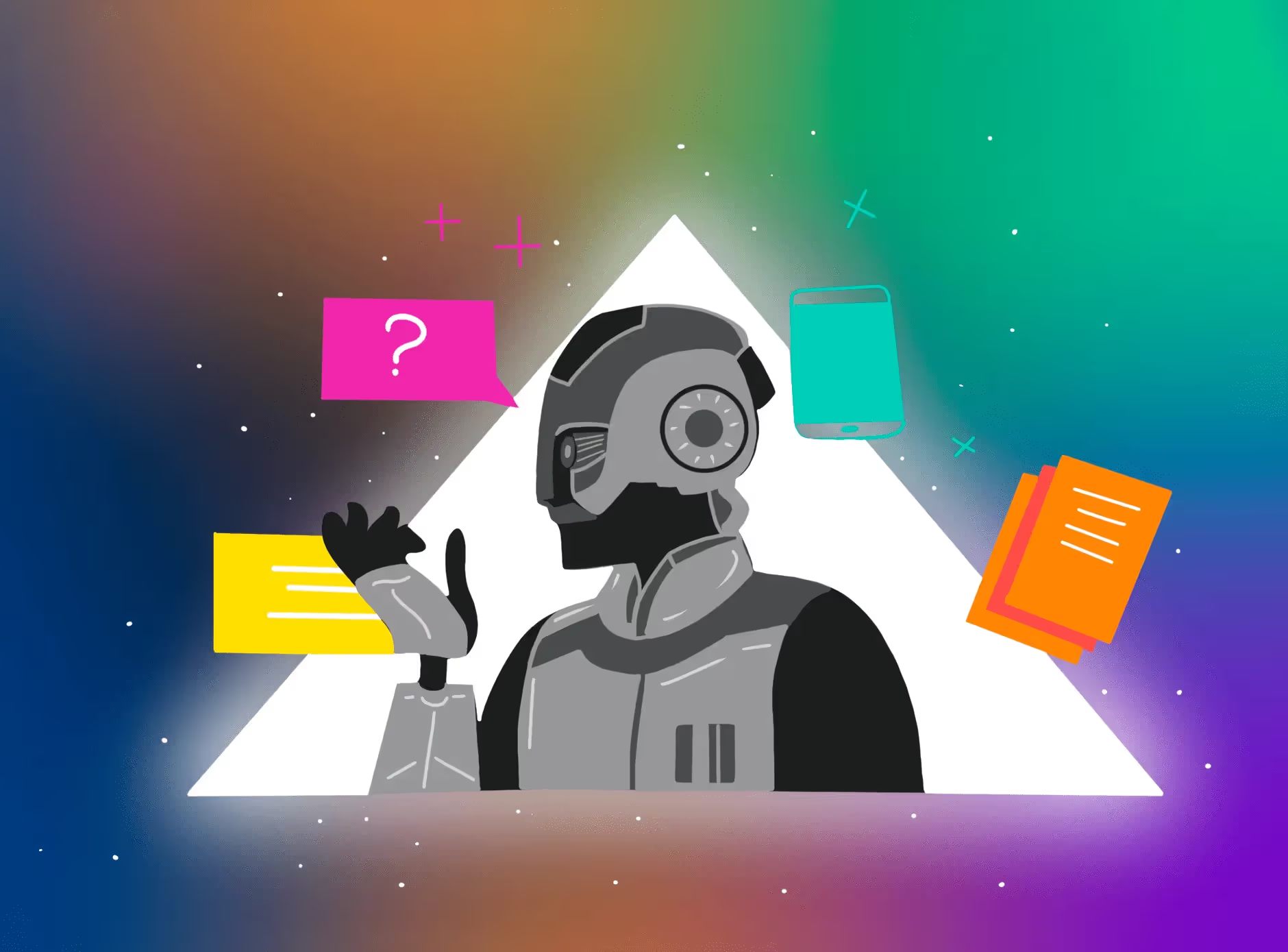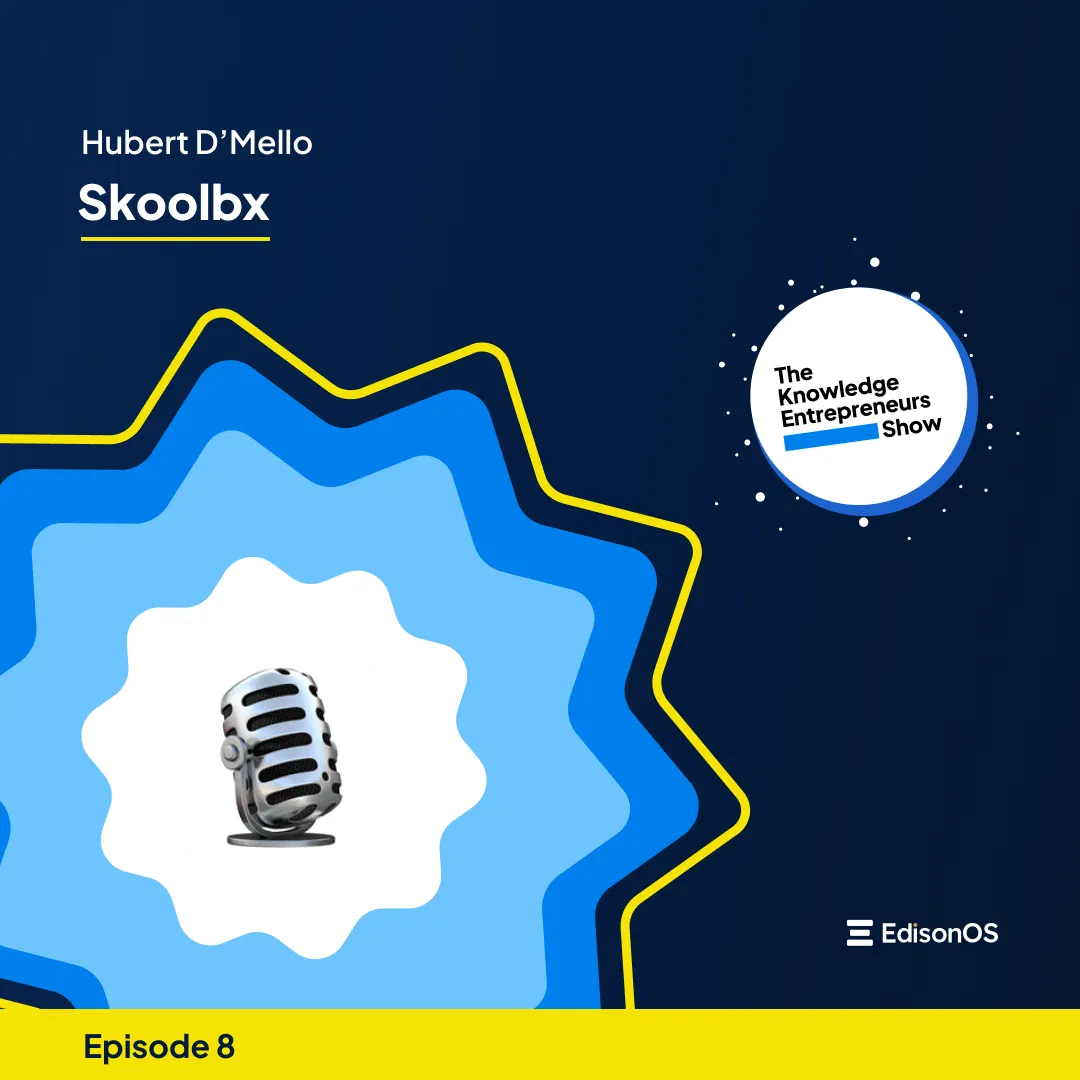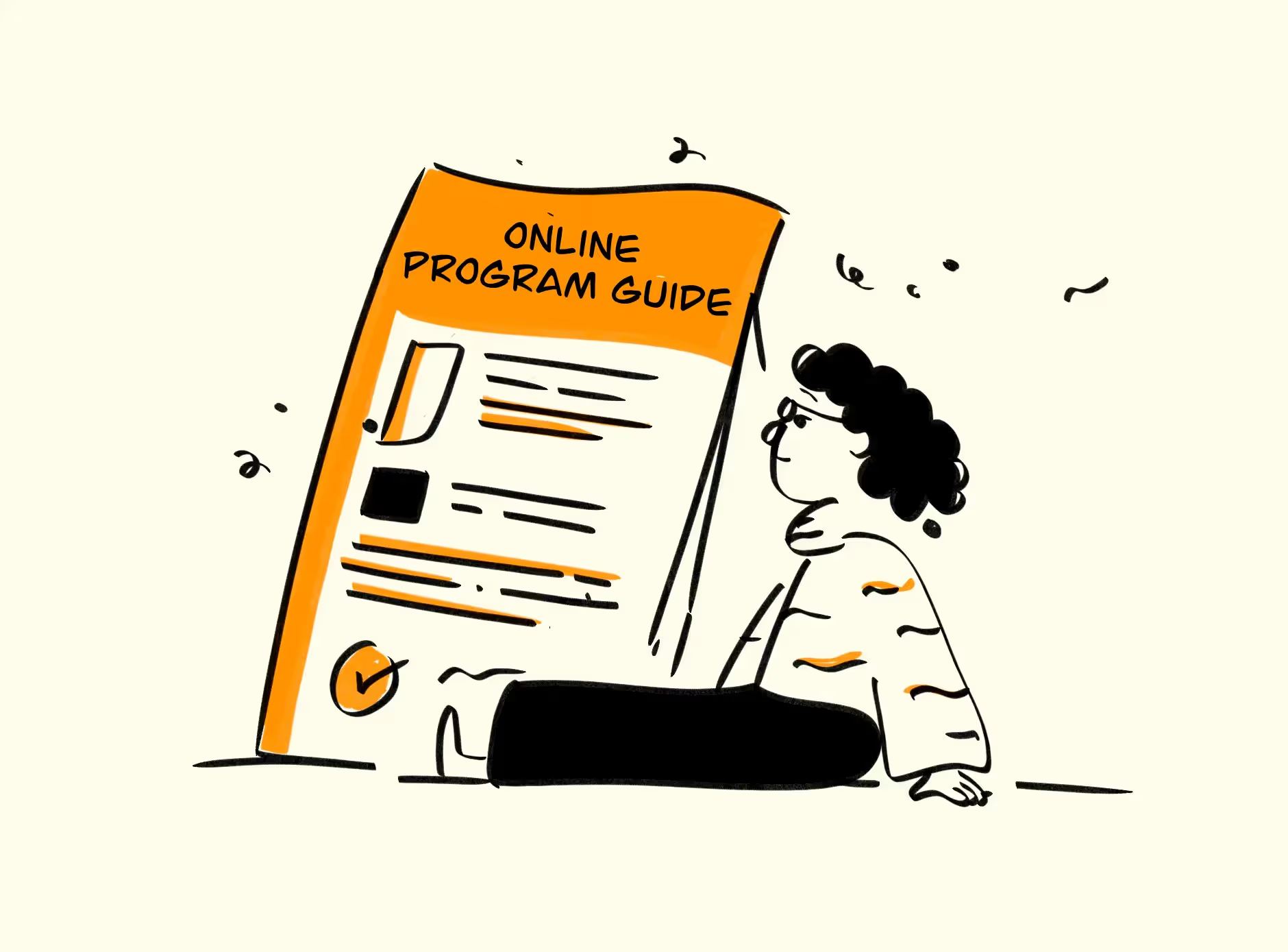


Key Takeaways
- AI Revolution in Tutoring: AI tools, like GPT, transform tutoring by automating administrative tasks, enabling creative content generation, and enhancing personalized student interactions.
- Administrative Efficiency: AI streamlines email drafting, scheduling, invoicing, and progress reporting, reducing the tutor's workload and saving time.
- Content Creation: AI assists in crafting engaging lesson plans, interactive activities, quizzes, and creative writing prompts, fostering an immersive learning experience.
- Student Engagement: AI enhances student interactions through instant doubt clarification, personalized study plans, and critical thinking exercises, ensuring effective learning outcomes.
- Study and Test Preparation: AI enables customized study schedules, detailed revision plans, and diverse test formats, such as multiple-choice, essay, and diagram-based questions, improving assessment quality.
Overview
In our fast-paced, technology-driven world, where artificial intelligence (AI) is rapidly transforming various industries, education and tutoring are no exception. If you're a tutor looking to take your work to the next level, you've come to the right place. Join us on a journey to discover how seamlessly integrating AI into your daily tutoring routine can revolutionize your teaching approach and unlock unparalleled efficiency.
In this blog, we'll explore a range of captivating use cases where AI can save you hours of time and effort, while supercharging your productivity. Say goodbye to mundane tasks and hello to a tutoring experience that's both innovative and impactful. Let's dive in and unlock the limitless potential AI brings to your tutoring sessions.
Ease Your Administrative Burden with AI
As a dedicated tutor, you know that administrative tasks can consume a significant portion of your time and energy, diverting your focus from what truly matters: teaching. Fortunately, artificial intelligence (AI), particularly GPT models from OpenAI, can alleviate this burden and streamline your daily workflow. Let's delve deeper into how AI can revolutionize various administrative aspects of tutoring, saving you valuable hours and enhancing your overall efficiency.
1. Email Drafting
Crafting the perfect email can be time-consuming, especially when communicating with parents or students. With GPT, generating professional and personalized emails becomes a breeze. By providing a simple prompt such as, "Draft an email to a student's parents about their progress in the last month," GPT will swiftly generate a comprehensive email that you can review and add your personal touch to, saving you valuable time and ensuring effective communication.
2. Scheduling
Coordinating tutoring sessions and sending out timely reminders is crucial for maintaining a structured learning environment. GPT can assist you by generating reminder emails for upcoming sessions. By using a prompt like, "Write a reminder email about our next tutoring session," GPT will swiftly provide you with a friendly and informative reminder that you can send to your students, ensuring a seamless scheduling process.
3. Lesson Planning
Creating engaging and well-structured lesson plans is essential for effective tutoring. GPT can be an invaluable tool in this regard. Simply provide GPT with the topic or concept you wish to teach, such as "Create a lesson plan for teaching fractions to 5th graders," and be prepared to be amazed by the thoughtful and comprehensive lesson plan it generates. This not only saves you time but also helps you deliver high-quality instruction tailored to your students' needs.
4. Student Progress Reports
Providing personalized feedback and progress reports is crucial for tracking your students' development. However, individually drafting these reports can be time-consuming. GPT can significantly simplify this process by generating draft reports based on specific student achievements or challenges. For example, by prompting GPT with "Write a progress report for a student who has shown significant improvement in English but is struggling with mathematics," you'll receive a draft report that you can easily customize and personalize to reflect each student's unique progress.
5. Invoicing
Managing the financial aspect of your tutoring business can be a tedious task. GPT can assist you by generating invoice descriptions or reminders for your clients. For instance, if you need to send a polite reminder about an overdue payment, a simple prompt like "Write a polite reminder to a client about an overdue payment" will provide you with a professional and courteous message, allowing you to efficiently manage your financial interactions.
6. FAQs and Responses
Addressing common questions from students or parents can be time-consuming, especially when the same inquiries arise repeatedly. GPT can be an invaluable resource for generating comprehensive and detailed responses to frequently asked questions. By feeding GPT a list of FAQs, it will generate understandable answers that you can use to promptly address common concerns, freeing up your time for more meaningful interactions with your students.
7. Personalized Learning Paths
Every student has unique strengths and weaknesses. Designing personalized learning paths can be a complex and time-intensive task. GPT can simplify this process by creating tailored learning paths based on individual student profiles. By providing GPT with a student's strengths and weaknesses, and prompting it with something like, "Devise a personalized learning path for a student who excels in science but struggles with English," you'll receive a customized roadmap to guide your instruction, ensuring optimal progress and growth for each student.
8. Student Feedback
Offering constructive feedback on student assignments, such as essays or projects, is a fundamental aspect of tutoring. GPT can assist you by generating detailed feedback for specific assignments. For instance, by prompting GPT with "Generate feedback for a student's essay on the American Civil War," you'll receive comprehensive suggestions and insights to guide your student's improvement.
9. Session Recap Emails
Keeping parents and students informed about the content covered in each tutoring session is essential for maintaining open communication and fostering progress. GPT can help you by swiftly generating recap emails summarizing the key topics and concepts discussed during a session. For example, by requesting GPT to "Draft a recap email for the recent trigonometry session," you'll receive a concise and informative email that ensures everyone is on the same page.
10. Parent Updates
Maintaining effective communication with parents is vital for their engagement and support. GPT can assist you in writing informative and timely email updates about changes in the tutoring schedule or other important information. By prompting GPT with something like "Write an email update to parents about the changes in the tutoring schedule for the next month," you'll receive a well-crafted email that keeps parents informed and involved in their child's educational journey.
By integrating AI into your tutoring workflow, you can significantly reduce the time spent on administrative tasks, allowing you to focus more on what truly matters: providing high-quality instruction and fostering student success.
Ignite Your Creativity: AI in Content Creation
AI not only excels in handling administrative tasks but also serves as a powerful ally in content creation, allowing you to unleash your creativity and generate engaging learning materials. Here are some remarkable ways AI can assist you in crafting captivating content:
1. Interactive Lessons
Gone are the days of traditional lectures. With AI, you can design interactive lessons that captivate your students' attention and enhance their understanding. Simply prompt GPT with a topic such as "Design an interactive lesson on the water cycle," and watch as it generates a range of activities, simulations, and visual aids that bring the topic to life. From interactive diagrams to virtual experiments, AI helps you create immersive learning experiences.
2. Questions and Quizzes
Assessing students' knowledge is crucial for gauging their understanding and progress. AI can swiftly generate questions and quizzes tailored to specific topics and grade levels. Need a quick quiz on photosynthesis for a 7th-grade science class? Prompt GPT with "Generate ten multiple-choice questions on the topic of photosynthesis," and you'll receive a set of thought-provoking questions that challenge your students' knowledge.
3. Writing Assistance
Creating high-quality learning resources often involves extensive writing. GPT can serve as your writing assistant, offering support in outlining, drafting, and editing. If you're preparing a blog post on the impacts of World War II, simply prompt GPT with "Outline a blog post about the impacts of World War II," and you'll receive a comprehensive outline to guide your writing process.
4. Discussion Prompts
Stimulating meaningful discussions among your students is essential for critical thinking and engagement. AI can generate thought-provoking discussion prompts tailored to specific literary works, topics, or grade levels. For example, by prompting GPT with "Generate discussion prompts for a high school book club reading 'To Kill a Mockingbird,'" you'll receive a range of thought-provoking questions that encourage deep analysis and reflection.
5. Visual Aids Descriptions
Visual aids play a crucial role in enhancing understanding and retention. GPT can assist you in crafting concise and engaging descriptions for visual aids used in your lessons. Whether it's a diagram of the solar system or an infographic on renewable energy, prompt GPT with "Write descriptions for visual aids to be used in a lesson about the solar system," and you'll receive vivid and informative descriptions that enrich your teaching materials.
6. Supplementary Reading Materials
Providing additional reading materials enriches your students' learning experience. GPT can swiftly generate brief summaries of supplementary reading materials. For instance, if you're teaching Shakespeare's "Romeo and Juliet," prompt GPT with "Generate a brief summary of a supplementary reading material for 'Romeo and Juliet,'" and you'll receive concise summaries that enhance your students' comprehension and appreciation of the play.
7. Homework Assignments
Assigning homework tasks that reinforce lesson concepts is crucial for solidifying learning. GPT can help you create customized homework assignments and questions. Whether it's a math problem related to Pythagoras' theorem or a writing task on persuasive techniques, prompt GPT with "Create homework assignment questions for a lesson on Pythagoras' theorem," and you'll receive tailored questions that challenge your students' understanding and skills.
8. Project Idea
Encouraging project-based learning fosters creativity and critical thinking. AI can provide you with a variety of project ideas tailored to specific topics or subject areas. For example, prompt GPT with "Provide five project ideas for students studying the industrial revolution," and you'll receive innovative and engaging project suggestions that encourage exploration and interdisciplinary thinking.
9. Cross-curricular Activities
Integrating different subjects in your lessons promotes a holistic understanding of complex topics. GPT can suggest cross-curricular activities that combine different subject areas. For example, by prompting GPT with "Suggest a cross-curricular activity that combines geography and environmental science," you'll receive creative ideas that foster connections between subjects and deepen your students' learning experience.
10. Creative Writing Prompts
Nurturing your students' creativity through writing assignments is essential. GPT can generate a wide range of creative writing prompts that spark imagination and inspire storytelling. Prompt GPT with "Give ten prompts for a creative writing assignment," and you'll receive a collection of engaging prompts that encourage your students to explore their creativity and develop their writing skills.
With AI as your creative partner, you can unlock endless possibilities in content creation, making your teaching materials more engaging, effective, and enjoyable for your students.
Enhance Student Interactions with AI
In addition to streamlining administrative tasks and content creation, AI can play a transformative role in enhancing your interactions with students, fostering personalized and engaging learning experiences. Here are some ways in which GPT can help you optimize student interactions:
1. Instant Doubt Clearing
GPT can provide quick and accurate responses to students' academic doubts. Whether it's clarifying a concept or explaining a specific topic, students can ask questions such as "Explain the difference between kinetic and potential energy," and GPT will generate clear and concise explanations, helping students grasp key concepts effectively.
2. Homework Help
Students often encounter challenges with their homework assignments. GPT can assist by providing step-by-step guidance and solutions. When a student asks, "Help me solve this algebra problem: 2x + 3 = 9," GPT can generate the necessary steps to solve the problem, empowering students to learn independently.
3. Language Practice
For language tutors, GPT can create practice exercises that enhance students' language skills. By prompting GPT with "Generate five English to French translation exercises," you'll receive a set of exercises that students can engage with to improve their language proficiency and reinforce their learning.
4. Coding Help
GPT can provide valuable assistance in coding problems. When students encounter challenges in coding, they can seek help by asking questions such as "Explain how a for loop works in Python." GPT will generate detailed explanations and examples, helping students overcome obstacles and deepen their understanding of programming concepts.
5. Scientific Explanation
Complex scientific concepts can be challenging for students to grasp. GPT can simplify these concepts by providing clear explanations in simple language. For example, if a student asks, "Explain Einstein's Theory of Relativity in simple terms," GPT will break down the theory into understandable components, making it more accessible and engaging for students.
6. Historical Insights
Students can gain in-depth insights into historical events and periods by seeking information from GPT. For instance, when a student asks, "Describe the political climate during the French Revolution," GPT can provide detailed historical context and key political factors, enriching students' understanding of historical events.
7. Math Problem Solving
Complex math problems can often be a stumbling block for students. GPT can guide students through the problem-solving process step by step. When a student seeks assistance with a challenging math problem, such as "Help solve this calculus problem," GPT will provide a logical approach and explanations, empowering students to overcome obstacles and strengthen their mathematical skills.
8. Book Discussions
GPT can generate thought-provoking questions and discussion points for literature discussions. By prompting GPT with a specific book, such as "Generate discussion points for 'Lord of the Flies'," you'll receive a range of insightful questions that stimulate critical thinking and encourage meaningful discourse among students.
9. Essay Drafting
GPT can provide valuable support in the essay writing process. When students need assistance in drafting their essays, they can request GPT to generate a draft based on a given topic. For example, by asking GPT to "Draft an essay about the impacts of climate change," students receive a structured framework that they can expand upon and refine, facilitating the writing process.
10. Critical Thinking Exercises
GPT can create engaging critical thinking exercises to promote analytical skills. By prompting GPT to "Create critical thinking exercises on the topic of media ethics," you'll receive a set of thought-provoking exercises that challenge students' reasoning, encourage independent thinking, and develop their ethical awareness.
By leveraging AI to enhance student interactions, you can provide personalized support, encourage independent learning, and foster engagement and curiosity in your students.
Effective Study Planning with AI
AI can revolutionize study planning, providing students with personalized and effective strategies to maximize their learning potential. Here are some ways in which AI can assist in creating study plans and optimizing study sessions:
1. Study Schedule
By prompting AI with specific requirements, such as "Generate a study schedule for a high school student preparing for final exams with a focus on math and science," AI can create a comprehensive study schedule that allocates dedicated time for each subject, incorporates breaks, and ensures a balanced approach to studying. The schedule can be customized based on the student's availability and preferences.
2. Revision Plans
For students preparing for exams, AI can create detailed revision plans tailored to specific subjects or exams. For example, by requesting AI to "Create a 30-day revision plan for an AP Biology exam," students receive a day-by-day breakdown of topics, review materials, and practice exercises, enabling them to cover the entire syllabus systematically and efficiently.
3. Topic Breakdown
AI can assist in breaking down complex topics into manageable study plans. By requesting AI to "Breakdown the topic 'Climate Change' into a 4-week study plan for a middle school student," students receive a structured plan that covers various subtopics, resources, and activities for each week, allowing them to delve into the subject progressively and gain a comprehensive understanding.
4. Concept Clarification
When students encounter challenging concepts, AI can provide clear explanations tailored to their grade level. For example, by asking AI to "Explain the concept of 'Supply and Demand' in economics for a 10th grader," students receive a concise and accessible explanation that clarifies the fundamental principles and relationships underlying the concept.
5. Resource Suggestions
AI can recommend online resources to supplement students' learning materials. By requesting AI to "Suggest five online resources for studying AP US History," students receive a curated list of reputable websites, interactive platforms, educational videos, or digital textbooks that offer in-depth content and additional practice resources to enhance their understanding of the subject.
6. Learning Techniques
AI can provide students with effective learning techniques to optimize their study sessions. By asking AI to "Provide five learning techniques for a student struggling with language learning," students receive a range of strategies such as mnemonic devices, immersive language apps, conversational practice tips, or vocabulary-building exercises tailored to their specific needs.
7. Studying Reminders
AI can assist in creating study reminders and notifications to help students stay on track with their study goals. By requesting AI to "Draft a study reminder for a student prepping for SATs," students receive personalized messages that remind them of their study commitments, encourage regular practice, and provide motivational cues to maintain focus and discipline.
8. Study Break Ideas
AI can suggest productive study break activities that promote relaxation and rejuvenation while maintaining productivity. By asking AI to "Suggest five productive study break activities," students receive ideas such as short mindfulness exercises, physical activities, creative outlets, or engaging in hobbies that refresh the mind and prevent burnout during study sessions.
9. Self-Assessment Tests
AI can generate self-assessment tests to help students evaluate their understanding and progress. By requesting AI to "Create a short self-assessment test for a chapter on World War II," students receive a set of questions or problems that allow them to gauge their comprehension, identify areas of improvement, and reinforce their learning through self-directed assessments.
10. Progress Tracking
AI can assist students in tracking their progress and setting goals by creating visual layouts or templates. For instance, by asking AI to "Create a weekly progress tracking layout for a student studying for a chemistry exam," students receive a framework where they can record study hours, review topics, track completed assignments, and monitor their overall progress, fostering a sense of achievement and motivation.
With AI-powered study planning, students can optimize their study sessions, stay organized, and develop effective learning habits.
Efficient Test Creation with AI
AI can streamline the process of test creation, allowing you to generate a wide range of engaging and effective assessment materials quickly and effortlessly. Here are various ways in which AI can assist in creating different types of test questions:
1. Multiple Choice Questions
By prompting AI with a specific topic, such as "Generate ten multiple-choice questions on the topic of photosynthesis for a 7th-grade science class," AI can generate a set of multiple-choice questions with answer choices that assess students' knowledge and comprehension of the subject. These questions can cover different aspects of the topic and provide options that test common misconceptions or specific details.
2. Essay Questions
AI can help you create essay questions that prompt students to analyze literature, express their thoughts, and showcase critical thinking skills. For example, by requesting AI to "Create three essay questions for a literature test on 'Pride and Prejudice,'" you can receive thought-provoking prompts that explore themes, character development, or the author's writing style, allowing students to delve deep into their understanding and interpretation of the text.
3. Short Answer Questions
AI can generate short answer questions that require students to provide concise yet comprehensive responses. For instance, by asking AI to "Generate five short answer questions on the American Revolution," you can obtain questions that cover key events, causes, or individuals related to this historical period, enabling students to demonstrate their knowledge in a succinct manner.
4. Fill in the Blanks
AI can create fill-in-the-blanks exercises that assess students' understanding of specific concepts or terms. By requesting AI to "Create a fill-in-the-blanks exercise on photosynthesis," you can receive a set of sentences or statements with missing words, providing students with an opportunity to recall and apply their knowledge of the topic by filling in the appropriate terms.
5. True or False Questions
AI can generate true or false questions that assess students' understanding of factual information or concepts. For example, by asking AI to "Create ten true or false questions about Shakespeare's 'Macbeth,'" you can receive a set of statements related to the play, allowing students to evaluate their comprehension and identify the accuracy of each statement.
6. Match the Following
AI can design "match the following" exercises that require students to connect related items or concepts. By prompting AI with a specific theme, such as "Design a 'match the following' exercise on world capitals for a geography test," you can receive a set of pairs that need to be correctly matched, encouraging students to demonstrate their knowledge of geographic locations and their corresponding capitals.
7. Diagram Labeling
AI can assist in creating diagram labeling exercises that assess students' understanding of visual representations. By requesting AI to "Describe a diagram labeling exercise on the human digestive system for a biology test," you can receive instructions and labels for the different parts of the diagram, allowing students to identify and label the specific components accurately.
8. Problem-Solving Questions
AI can generate problem-solving questions for subjects like mathematics or physics. For instance, by asking AI to "Generate five problem-solving questions for a math test on algebra," you can obtain a set of questions that require students to apply algebraic concepts to solve equations, analyze patterns, or solve real-life problems, fostering their problem-solving skills and mathematical reasoning.
9. Crossword Puzzles
AI can suggest crossword puzzle layouts based on specific subject matter. By requesting AI to "Suggest a crossword puzzle layout based on the terms in a chapter on ecosystems," you can receive a crossword puzzle grid with clues related to ecological concepts, helping students reinforce their understanding of terminology and concepts in an interactive and engaging way.
10. Picture-Based Questions
AI can create picture-based questions that require students to interpret visual information. For example, by asking AI to "Create five picture-based questions for a test on ancient civilizations," you can receive questions that accompany images or diagrams related to ancient civilizations, allowing students to analyze visual representations and apply their knowledge to answer the questions accurately.
By leveraging AI for test creation, tutors can save time and effort while ensuring that assessments are comprehensive, varied, and aligned with the learning objectives. AI-powered test creation enables tutors to focus on analyzing student performance and providing targeted feedback, ultimately enhancing the overall learning experience.
Excited by these possibilities? Ready to transform your tutoring practice? If so, our upcoming Masterclass 'Discover How AI Can Reinvent Your Teaching Strategy' is perfect for you! We'll dive deeper into each of these areas, providing step-by-step instructions, tips, real-world use cases, and ready-to-use prompts. Don't miss this opportunity to revolutionize your tutoring work with AI. Click here to register now and take the first step towards a more efficient and creative tutoring practice!

Tutors Edge by EdisonOS
in our newsletter, curated to help tutors stay ahead!
Tutors Edge by EdisonOS
Get Exclusive test insights and updates in our newsletter, curated to help tutors stay ahead!
Recommended Reads
Recommended Podcasts












.png)
.webp)
